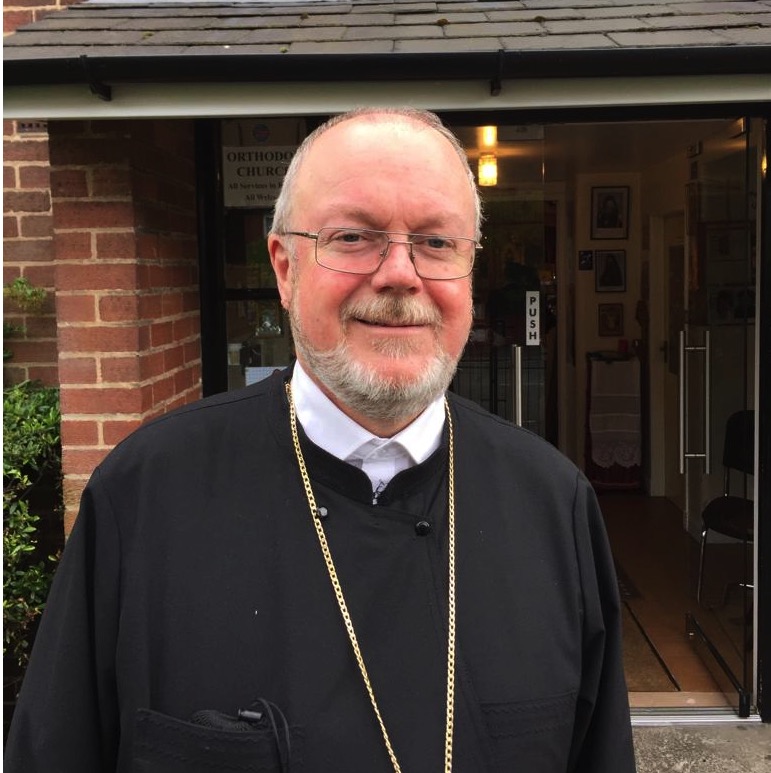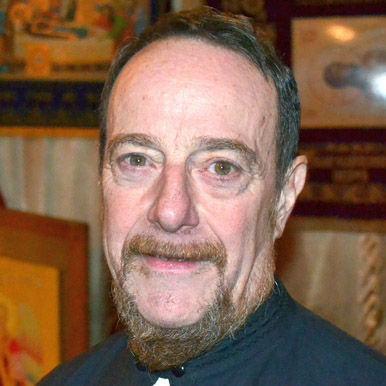In the name of the Father and of the Son and of the Holy Spirit. God is One.
Yesterday I spoke about the Presentation of Holy Mary in the Temple which we celebrate today, and of how the parents of Holy Mary, Saints Anna and Joachim, prepared her to serve the Lord. Today I would like to continue that reflection, but largely in hymns and poetry. This focus on hymns and poetry is very much in the Tradition of the Orthodox Church, especially the Kontakions of St Roman the Melodist and St Ephrem the Syrian.
The Greek Orthodox Archdiocese of America points out: “This [Presentation of Holy Mary in the Temple] is a feast of anticipation. As honour is shown to [Holy] Mary, [we] faithful are called to look forward to the Incarnation of Christ.” The Kontakion of the Forefeast expresses both our anticipation and our joy:
Today the universe is filled with joy
At the glorious feast of the Mother of God, and cries out:
‘She is the heavenly tabernacle.’”
Now, we can readily understand that Holy Mary is “the heavenly tabernacle”—the place where God will dwell in all His glory through the Incarnation. But the third century theologian and Biblical scholar Origen takes the reading that we have just heard from chapter 9 of the Book of Hebrews and challenges us with these words: “Each of us can build a tabernacle of God in himself [or herself]. For if, as some before us have said, this tabernacle represents a figure of the whole world, and if each individual [person] can have an image of the world in oneself, why should not each [person] be able to fulfil the form of the tabernacle in oneself? …. For that part within you which is most valuable of all can act … the part which some call the first principle of the heart, others the rational sense or the substance of the mind or whatever name one wishes to give to that part of us which makes us capable of receiving God” [end of quote]. So Origen is saying whether one is speaking of “the heart” or reason or “the mind”—whatever your philosophy or understanding of human nature—we are each “capable of receiving God.” How? How can we receive God?
First, it is good to understand that Saints Anna and Joachim were good parents of Holy Mary, preparing her for the Lord’s work. When Joachim proposed in the seventh chapter of the Infancy Narratives of James that Holy Mary should be taken to the Temple, “Anna said, ‘Let us wait for the third year, in order that the child may not seek for father or mother.’ And Joachim [agreed]: ‘So let us wait.’” That is a magnificent goal for every parent who wish that their children will receive God—that their children are so secure in their identity that they “may not seek for father or mother.” Whether or not that happens will depend to a considerable extent upon the infancy of each child. Therefore, there is considerable truth in the words of the Italian and Argentine poet Antonio Porchia: “Infancy is what is eternal;/ and the rest, all the rest/ is brevity, extreme brevity.”
As T.S. Eliot has written in “East Coker,” “In my beginning is my end.” That was certainly true for Holy Mary, because it was in the holiness and sanctuary of the nursery that her parents built for her that she was prepared for her holiness in later life. For Joachim and Anna during some fifty years of a childless marriage, life was a struggle. They would have agreed with the sentiments of T.S. Eliot in the final section of “East Coker” that:
There is only the fight to recover what has been lost
And found and lost again and again: and now, under conditions
That seem unpropitious. But perhaps neither gain nor loss
For us, there is only the trying. The rest is not our business.
Indeed, old age seem quite unpropitious—quite an unfavourable time to have a child. Yet Anna and Joachim continued, as T.S. Eliot phrased it, “to try.” They continued to pray to God and to try to serve Him, according to the guidelines of their religious culture.
Joachim and Anna would have been at ease with the closing lines of “East Coker” in which T.S. Eliot urged that:
Home is where one starts from. As we grow older
the world becomes stranger, the pattern more complicated
Of dead and living….
We must be still and still moving
Into another intensity
For a further union, a deeper communion….
However, Anna and Joachim were not seeking the deeper communion with nature that T.S. Eliot sought, but rather a deeper communion, a deeper unity with God Himself. We too can seek that “deeper communion” with Christ, the Messiah, the child of the Theotokos from whom we learn, in Eliot’s phrase, “how to be still and still moving into another intensity.” This possibility that each of us can learn “how to be still” and silent and “still moving into another intensity” through prayer is captured in the fourth century hymns of St Ephrem the Syrian.
In Hymn 16 Holy Mary sings to the infant Jesus:
I shall not be jealous, my Son, that You are both with me and with everyone. Be God to the one who confesses You, and be Lord to the one who serves You, and be brother to the one who loves You so that You might save all…. When I see Your outward image before my eyes (continues Holy Mary) Your hidden image is portrayed in my mind. Have You shown Your beauty in two images to me alone? Let bread and the mind portray You. Dwell in bread and in those who eat it—[that’s us!]. In hidden and revealed [form] let your Church see You as [do I] the one who bore You.
A note in The Classics of Western Spirituality edition of Ephrem the Syrian: Hymns explains that “after the time of the Incarnation the Eucharist and the mind become the outward and inner ways” of knowing Christ. So when we receive the Eucharist we come to know Christ outwardly in the form of bread and wine as the Body and Blood of Christ. As we each pray and worship—alone, and in families and in community—we come like Holy Mary to know Christ inwardly. Then we too, like the Theotokos, can truly say to Christ, that You dwell “both in me and outside of me” both outwardly in the Eucharist and inwardly in my mind.
So as that Kontakion says:
Today the universe is filled with joy
At the glorious feast of the Mother of God, and cries out:
‘She is the heavenly tabernacle.’
We too can become through both the Eucharist and the prayers of our minds the heavenly tabernacle in which Christ dwells.

 Archpriest Gregory Hallam
Archpriest Gregory Hallam
 Fr. Emmanuel Kahn
Fr. Emmanuel Kahn